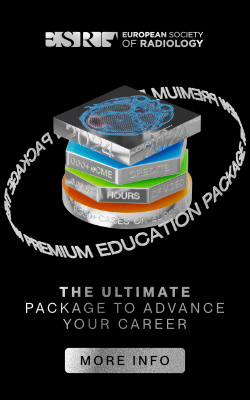Congress:
EuroSafe Imaging 2020
Keywords:
Action 12 - Information for and communication with patients, Artificial Intelligence, eHealth, Management, CT, Digital radiography, PACS, Computer Applications-General, Dosimetry, Radiation safety, Cancer, Retrospective, Diagnostic or prognostic study, Multicentre study
Authors:
D. Koff, O. Boursalie, R. Samavi, T. E. Doyle
DOI:
10.26044/esi2020/ESI-10315
Description of activity and work performed
Source Population: The training dataset used to develop our DSS has approximately 1.3 million diagnostic and 2.3 million imaging records from 340,525 patients over a ten-year period in four hospitals in Hamilton, Ontario, Canada.
Data Processing: Our first data processing step was to extract features from each patient’s health (e.g., gender, ICD-10 diagnostic chapter codes) and imaging (e.g., modality and body part scanned) records over the ten-year study period. Next, we estimated the patient’s effective dose exposure [7] from medical imaging using mean values from the literature [8]. Finally, we used aggregation [9] to sum the features across the patient’s medical events over the ten-year period to construct the dataset used to train the deep learning model.
Deep Learning Risk Model: While existing models linearly extrapolate the cancer risks from high radiation exposure to the low-dose radiation emitted by medical imaging, our deep learning model directly assesses the cancer risk from low-dose radiation by analyzing medical and imaging records. Cancer patients were labeled as those with an ICD-10 diagnostic code for neoplasm (C-D48) at least one year after their first CT scan. The resulting training set was unbalanced with 90% non-cancer and 10% cancer patients. To balance our training set, we trained our deep learning model using 10-fold down-sampled cross-validation.
Data Aggregator: Existing machine learning systems have no trust mechanism for auditing the data’s lifecycle (from collection to use, disclosure, and transformation) to ensure accountability. We designed a blockchain-based architecture [6] to facilitate trust management in a collaborative health environment. The proposed architecture has three layers (Fig. 2). First, the data layer generates date pointers that link to medical records and can be shared among actors. Next, the transaction layer is a mechanism to store and query data sharing transactions. Finally, the transparency layer generates an integrity proof of the data sharing transaction that all participants contribute to and maintain.
Preliminary Results: Our preliminary deep learning model classifies a patient’s cancer risk with reasonable accuracy suggesting medical and imaging history can be an indicator of cancer risk. In addition, our proposed architecture supports the confidentiality and integrity of the model by allowing the flow of data in our system to be audited [6]. However, patients’ total effective dose exposure was underestimated using mean doses from the literature which could impact the model’s performance. There is a need to develop novel imputation approaches to estimate patient effective dose exposure from medical imaging.
Limitation: Our deep learning model removes the temporal aspect of medical data when evaluating a patient’s cancer risk from medical imaging.

![Fig. 2: Architectural Layers [6]. References: Sutton et al. (2018) Digitized Trust in Human-in-the-Loop Health Research. 16th Annual Conference on Privacy, Security and Trust (PST). 1-10.](https://epos.myesr.org/posterimage/esr/eurosafeimaging2020/156371/media/857626?maxheight=150&maxwidth=150)
